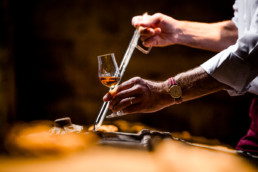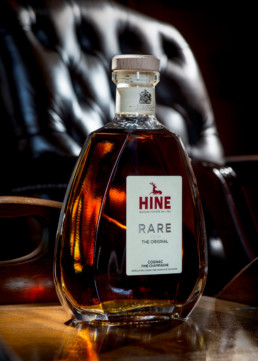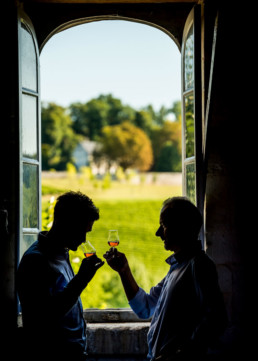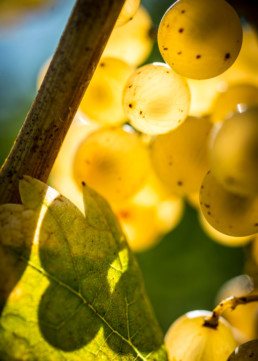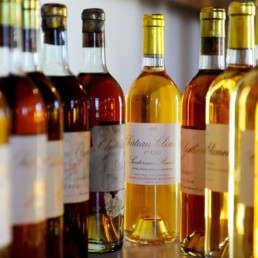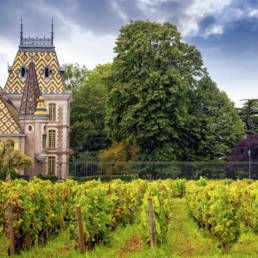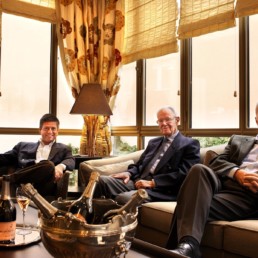Drinkin' Hine, Feelin' Fine
Here's Why You Should be Drinking Hine Cognac...
If one were to bottle opulence, what would you get? Cognac. Liquid gold. Smooth, amber liquid that blurs the line between wine and spirits. This fabled creation is revered for good reason among even the most discerning drinkers. Put on a pedestal where whispers of its prestige swirl at its foot – songs are sung about it and no fine bar is complete without it. But what IS Cognac?
We at Dhall & Nash have just this year introduced the first Cognac brand into our portfolio, Hine, and in doing so we’ve sparked a bit of a Cognac revolution within our own office. No dinner we host is complete without a cheeky Cognac at the end, lately! We live and breathe wine all day every day so to find something that adheres to all the rules and intricacies within the world of wine, yet sits in a sphere of its own has captivated us.
The Basics:
Cognac is a type of Brandy named for the town of Cognac in France. The easiest way to explain it would be all Cognacs are Brandy, but not all Brandies are Cognac. It must fit strict criteria to be a Cognac rather than a Brandy:
- It must hail from the Cognac AOC (Appellation d’Origine Contrôlée). Just as wines labelled Champagne must be from the Champagne AOC. Source of origin and locality is everything to French winemakers, and this extends to Cognac, too.
- It must be made from a specified grape variety (majoritively Ugni Blanc), that has been distilled twice in special copper alembic stills. The designs of such stills are – you guessed it – controlled by law.
- Once the distillation process has occurred, it must be aged for a minimum of two years in Limousin oak casks.
The Appellations:
If you’re familiar with French wine, you will be familiar with appellations and the great impact they have on winemaking. The AOC system was formally introduced in the early 20th century when the Law for the Protection of the Place of Origin was passed. This was to guarantee the authenticity and quality of a product.
They are, in Layman’s terms, specific geographic areas wherein each area has its own set of strict rules that are enforced by law and overseen by a specially appointed government bureau (they take reputation very seriously!). If you don’t follow the rules, you don’t get to use the prestigious label name.
There are seven growing regions or ‘departments’ within the Cognac AOC, sometimes referred to as ‘Cru’. There are two major players, of whom have (arguably) the highest reputation – Grande Champagne and Petite Champagne. (Side note: these have nothing to do with the sparkling cuvées that are synonymous with the name). The other five are Borderies, Fins Bois, Bons Bois, Bois Ordinaires and Bois à Terroirs.
Cognacs hailing from the Grande Champagne department of the AOC are considered by some to be the cream of the crop, followed closely by Petite Champagne. If a Cognac is comprised of a blend of these two designations it can be labelled as ‘Fine Champagne’ so long as the portion of Grande Champagne Cognac is 50% or more. Both areas boast shallow clay-limestone, over limestone and chalk.
The Labelling System:
One of the most frequently asked questions about Cognac is “what’s with the labelling system?” There are V’s and S’s and X’s aplenty – which can lead to a lot of head scratching for anyone who isn’t familiar with Cognac and all its intricacies. The good news is, there’s really only four designations of which you need to remember. VS, VSOP, XO and Hors d’âge, and each of them are an indication of age.
- VS: has been aged for a minimum of 2 years. VS stands for “Very Special” and can sometimes be represented as three stars.
- VSOP: Guarantees at least 4 years of aging. VSOP stands for “Very Superior Old Pale” or “Reserve”.
- XO: Until 2018, XO meant a wine was aged for 6 years. It now represents an aging time of 10 years, and the designation “Napoléon” will step in as the label for any brandies aged for 6 years. XO stands for “Extra Old”.
- Hors d’âge: or “Beyond Age”. To be labelled Hors d’âge, the Cognac fits the criteria of an XO, but the term Hors d’âge is often used to differentiate Cognacs that represent an even higher level of quality than an XO.
The best bit about these Cognacs is that the label given to a Cognac is determined by the age of the absolute youngest brandy used in the blending. Even in a VS brandy it is possible that some of the blend comes from barrels aged for decades.
Introducing Hine Cognac…
Our little corner of the world of Cognac rests with Hine. While it isn’t quite one of the big wigs like Rémy Martin or Hennessy, it isn’t a small name and definitely shouldn’t be passed by. Hine was awarded the Royal Warrant in 1962 by Her Majesty the Queen Elizabeth II, and remains the only official supplier of cognac to the British monarchy. Honestly, if it’s good enough for royalty, it’s good enough for us, but its praises don’t end there.
In 1791, Thomas Hine set out from his home in Dorset, England to learn the ins and outs of how Cognac was produced. He was a mere sixteen years old and curious about what went into creating the copper-tinted brandy his father favoured. His timing, however, was most unfortunate as he reached France right in the middle of the French Revolution – not the safest place for an Englishman at the time by any stretch of the imagination. After turning on his heels and attempting to high-tail it out of there, he was imprisoned at the Château de Jarnac. In a strange twist of events, he marries the daughter of the hosts – Françoise-Elisabeth – and in 1817 he retrospectively gave his name to the house which had been established on the banks of the Charente in 1763, before he’d even been born.
Since then, the descendents of Thomas and Françoise-Elisabeth have maintained the Hine Cognac House, and six generations have upheld its prestige. They are proud of the fact their cellar door has seen many a year pass by – all whilst being tended by the Hines. Today, Bernard Hine is at the helm.
The House of Hine cherishes a solid belief: that a great cognac is above all a great white wine.
“The identity of this wine is imprinted beneath our feet, at the heart of a living land that has evolved over thousands of years. Vines form the link between the earth and the heavens, replete with vagaries and caprices. They infuse the grapes with a character extracted from this unique, unparalleled place, imbued with a temporality that commands the here and now. Cognac embodies a perpetual quest for balance between consistency and virtuosity.”
And it was this philosophy that reeled us at Dhall & Nash in – hook line and sinker. We pride ourselves on our deep respect for the families who work their piece of earth until they know it as instinctively as the back of their hand – it etches itself into the bloodline, and to find this reflected so perfectly in the Hine belief was something that spoke to us all. Add to this the admirable way they’ve maintained a real essence of ‘cool’ that keeps up with modern times and remains approachable and fun, whilst marrying this with a real seriousness and respect for tradition and history. It’s rare for a brand to transcend these rather demographic-defining boxes and become a voice for both new generations of cognac-lovers and loyal veterans of the prestigious tipple.
As well as our word, and that of Her Majesty the Queen, there are plenty of critics who sing the praises of this House as well. Jason Wilson for Vinous recently published a piece detailing his love and exploration of Cognac. In this he says,
“…For this report, I’ve pushed beyond the Big Four, beyond the flashy and expensive, and tried to bring you a broad sense of what’s really happening in Cognac. I have covered more than 50 brands and offering reviews and ratings on more than 200 bottles.
I found value and quality among medium-sized producers like Frapin, Hine, Braastad-Tiffon, Pierre Ferrand, Delamain and Bache Gabrielsen, among others.“
The Guardian, too, listed it among the top ten distillers, tours and tastings.
All in all, Hine is the best of not just both worlds – but every world. It is a wine, it is a spirit, and it’s good at being both. It is a fresh, bold and slightly cheeky brand, yet remains serious and true to its origins going back centuries. Whether you’re young, old, a whiskey-lover, or a wine-aficionado, an ‘on the rocks’ fella or you like it with a twist – Hine’s got you covered.

H by Hine VSOP Cognac
“H by Hine is light amber, with a pretty nose of iris and buttered brioche. On the palate, it’s light and fresh, offering notes of nougat and candied orange, and some wood on the finish.”
Antonio Galloni, Vinous (92 points)
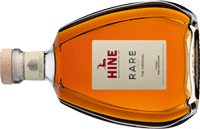
Hine Rare VSOP Cognac
“This rich, supple Cognac is a liquid expression of a vintage leather club chair. The nut-brown spirit has big aromas of crème brûlée, toffee, cigar tobacco and cocoa. After an initial sweetness on the tongue, it finishes relatively dry with lingering caramel, raisin, leather and orange peel flavors, and a bracing alcohol bite.”
Wine Enthusiast (93 points)
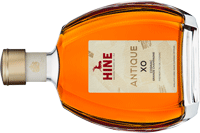
Hine Antique XO Cognac
“Light copper in color, with a subtle nose redolent of fresh flowers at first, but as it opens there are more expressive notes of fruit pastry, which carry on to the full-bodied palate. Pear tart, hazelnuts and a bit of spice and tobacco on the finish.”
Antonio Galloni, Vinous (93 points)
